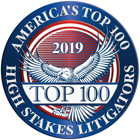On April 22, the Supreme Court of the United States issued its decision in Navarette v. California, 2014 WL 1577513, in which it held that an anonymous 911 call reporting erratic driving, uncorroborated by a police officer viewing any erratic driving indicative of the driver being under the influence, can create reasonable suspicion that the driver is driving under the influence of alcohol. The decision was written by Justice Thomas and joined by Chief Justice Roberts and Justices Kennedy, Breyer, and Alito. Justice Scalia wrote a dissent, joined by Justices Ginsburg, Sotomayor, and Kagan.
On August 23, 2008, a California Highway Patrol dispatch team received a 911 call from a driver on Highway 1 who reported that another driver ran her off the roadway. In the call, the driver told the dispatcher the color, make, model, and license plate of the vehicle, along with the mile marker where she was forced off the road. Defendant Lorenzo Navarette, the driver of the vehicle that ran the caller off the road, was spotted on the road 18 minutes later by a police officer, roughly 19 miles away from the incident. The officer followed Navarette for five minutes before pulling him over for suspicion of drunk driving. The officer did not personally witness Navarette driving erratically and did not notice anything else indicating possible drunk driving. After pulling him over, the officer found that Naverette was not drunk, but he did have 30 pounds of marijuana in his car, and he was charged with transporting marijuana. Navarette moved to suppress the evidence, arguing that the officer did not have the reasonable suspicion required to pull the car over, and the motion was denied. The California Court of Appeal affirmed the trial court’s denial of the motion, and the California Supreme Court denied review.
Calling it “a close case,” the Supreme Court affirmed the denial of the motion and found that the officer had reasonable suspicion to pull the vehicle over for three reasons. First, the caller reported information specific to the actual incident (i.e., the color, make, and model of the vehicle; the mile marker; and the fact that the caller specifically reported that Navarette had driven her off the road). Second, the call was accurate in time and space: it took 18 minutes for Navarette to drive 19 miles, and this fact increased the likelihood that the call was authentic. Third, the caller used the 911 system, which by law traces and tracks incoming calls, so (in theory) a caller would be foolish to make a false 911 report. Based on the totality of these facts, the majority found the tip, even in the absence of the officer witnessing erratic driving himself, sufficient to create the reasonable suspicion required to pull over the vehicle.
In his dissent, Justice Scalia put forward a panoply of reasons why there was in fact no reasonable suspicion in this case. Justice Scalia noted that the “no one is going to make a dishonest 911 call because they will be traced” theory only works if the person knows that the call will be traced. Moreover, Justice Scalia noted that one instance of hazardous driving hardly gives rise to a reasonable suspicion that the driver is engaged in ongoing intoxicated driving. Numerous other distractions could cause a driver to run another off the roadway, such as a restless child, an argument with a passenger, or looking at a cell phone. Justice Scalia also found the fact that the officer followed Navarrete for five minutes without seeing any evidence of drunk driving to be especially convincing, as it demonstrates that Navarette was in fact not intoxicated.
Justice Scalia called the majority’s opinion “a freedom-destroying cocktail,” and criminal defense attorneys agree. The Court essentially gives citizens carte blanche to seek vengeance on a foe and have him or her pulled over, as long as the citizen calls 911 and reports some details about the person’s vehicle and a bald allegation of reckless driving. If the driver is DUI, it is not certain whether the phone number and location of the “anonymous” caller would be discoverable to show vindictiveness or a lack of ability to observe the vehicle. Moreover, if the driver is not DUI, it would be hard for the driver to sue the government for an illegal stop, due to the doctrine of governmental immunity. Fortunately, Pennsylvania courts still have the right to find greater protection under the Pennsylvania Constitution should they choose to do so.
Let us know what you think of this decision in the comment section below.


















Or contact me privately:
steve@fairlielaw.com
(215) 997–1000